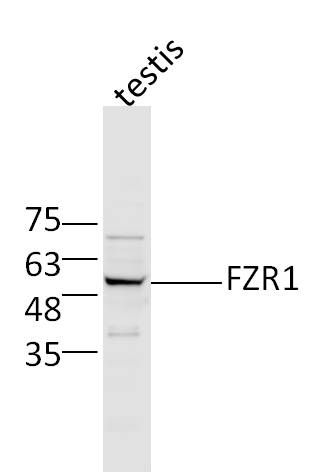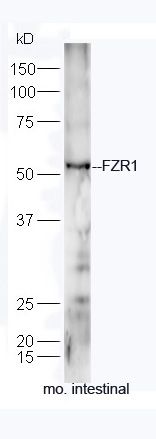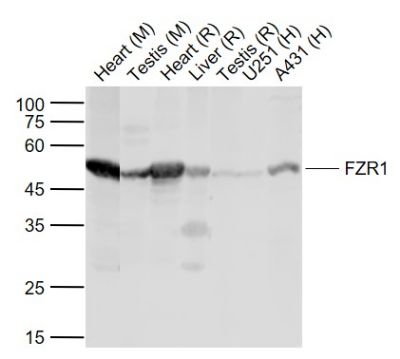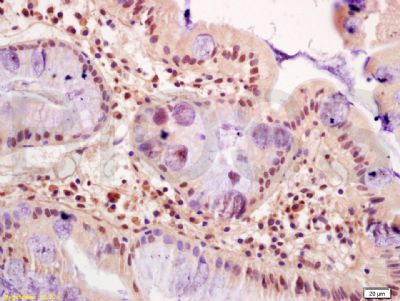Sample:
Lane 1: Heart (Mouse) Lysate at 40 ug
Lane 2: Testis (Mouse) Lysate at 40 ug
Lane 3: Heart (Rat) Lysate at 40 ug
Lane 4: Liver (Rat) Lysate at 40 ug
Lane 5: Testis (Rat) Lysate at 40 ug
Lane 6: U251 (Human) Cell Lysate at 30 ug
Lane 7: A431 (Human) Cell Lysate at 30 ug
Primary: Anti-FZR1 (SL1348R) at 1/1000 dilution
Secondary: IRDye800CW Goat Anti-Rabbit IgG at 1/20000 dilution
Predicted band size: 55 kD
Observed band size: 50 kD
Tissue/cell: human gastric carcinoma; 4% Paraformaldehyde-fixed and paraffin-embedded;
Antigen retrieval: citrate buffer ( 0.01M, pH 6.0 ), Boiling bathing for 15min; Block endogenous peroxidase by 3% Hydrogen peroxide for 30min; Blocking buffer (normal goat serum,SLC0005) at 37℃ for 20 min;
Incubation: Anti-FZR1/CDC20C Polyclonal Antibody, Unconjugated(SL1348R) 1:200, overnight at 4℃, followed by conjugation to the secondary antibody(SP-0023) and DAB(SLC0010) staining



